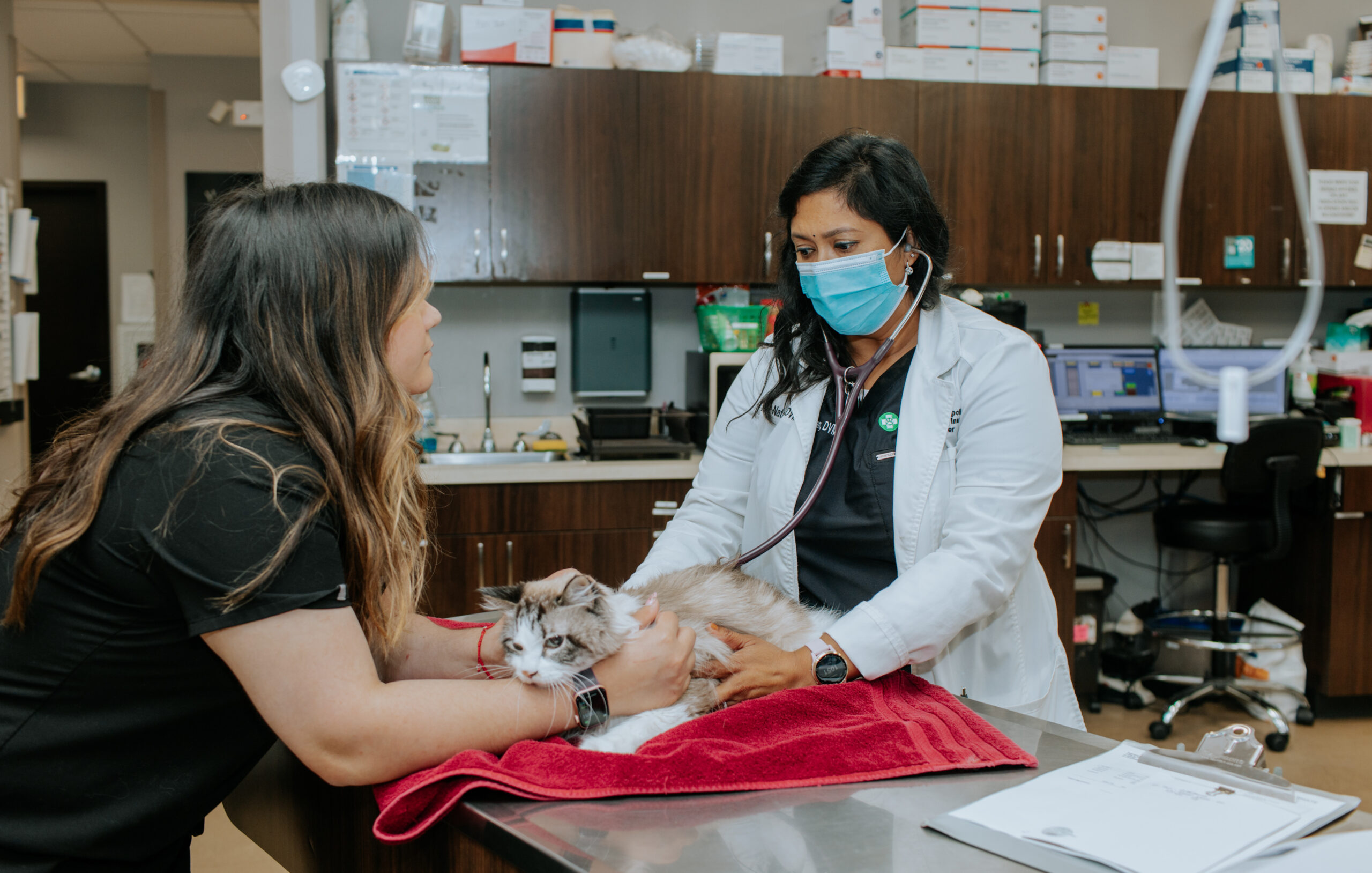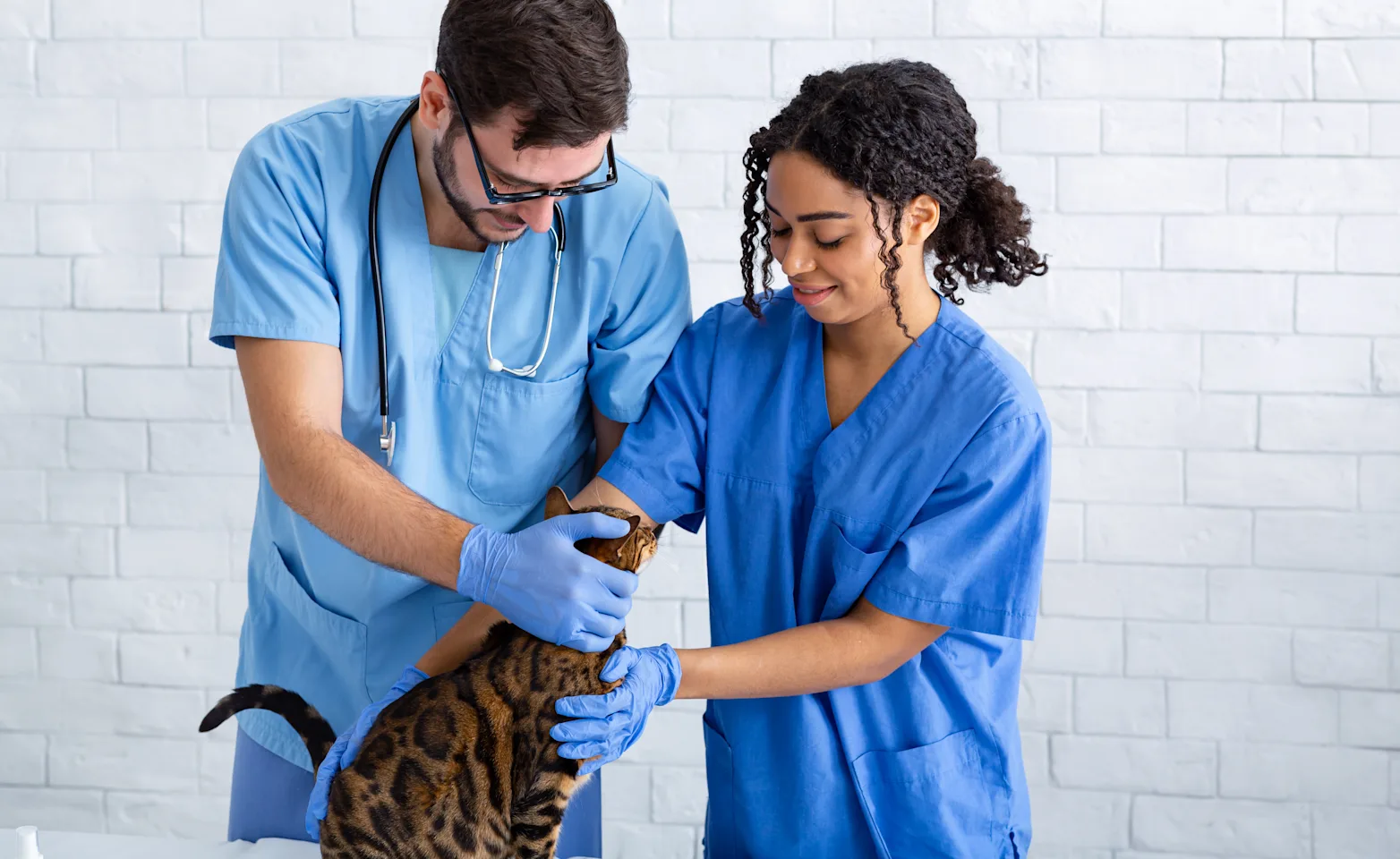Why Animal Rehabilitation Is Crucial: the Perks of Veterinarian Providers for Your Animal's Recovery
Animal rehabilitation is an important component of recuperation for family pets facing injuries or handicaps. Veterinary solutions offer critical assistance via customized recovery strategies that address individual demands. These plans typically include discomfort management, physical treatment, and dietary advice. Comprehending the numerous elements of animal rehab can illuminate its importance in improving recovery outcomes. What details advantages do these services offer, and just how can they change a pet dog's healing journey?
Comprehending Animal Rehab
Animal rehab incorporates a range of restorative methods focused on bring back the health and functionality of injured or disabled animals. This field incorporates numerous strategies, including physical treatment, hydrotherapy, and work treatment, tailored to fulfill the details needs of each pet. Rehab experts examine a pet's problem, establishing customized therapy plans that may entail workouts to reinforce muscles, enhance mobility, and boost overall wellness. The procedure not only concentrates on physical healing but likewise addresses psychological and behavioral elements. Animals frequently experience anxiety and stress and anxiety following an injury, making mental health factors to consider crucial in recovery. By creating a helpful atmosphere, specialists can help pets regain their confidence and adapt to their new conditions. With routine sessions, pets can experience substantial improvements, eventually bring about a far better lifestyle. Generally, recognizing pet recovery highlights its importance in promoting recuperation and improving the bond between animals and their proprietors.
The Role of Pain Administration in Recuperation
Exactly how crucial is reliable discomfort administration in the recovery of hurt animals? It plays a vital role in helping with healing and improving the general health of family pets. Correct discomfort management not only eases pain yet likewise advertises wheelchair, enabling animals to join recovery activities needed for recovery. When discomfort is properly handled, pets tend to react favorably to treatment, causing quicker rehabilitation outcomes.Veterinarians make use of various techniques to analyze and address discomfort, consisting of medicines, acupuncture, and alternate therapies. By customizing discomfort management techniques to the individual needs of each animal, veterinarians can assure that pets continue to be calm and cooperative throughout their healing trip. Furthermore, lessening discomfort helps reduce stress and anxiety, which can prevent healing and extend recovery times. To summarize, efficient pain administration is important for boosting the healing procedure and improving the lifestyle for injured pets.
Physical Treatment Methods for Animals
Many physical therapy methods are available to aid in the recovery of pets recuperating from injuries or surgical treatments (animal emergency care bellingham). These strategies can boost mobility, soothe discomfort, and promote healing. Therapeutic exercises, for circumstances, help reinforce muscles and improve joint function, enabling pet dogs to regain their physical capabilities progressively. Manual therapy, that includes massage and mobilization, can relieve stress and enhance circulation, adding to a quicker recovery.Other methods such as easy range of activity exercises encourage joint flexibility and lower rigidity. In addition, electrical stimulation therapy may be employed to stimulate nerves and muscles, advertising recovery and discomfort relief.Veterinary specialists typically tailor these techniques to every family pet's certain demands, making certain a comprehensive rehab strategy. By implementing these physical treatment approaches, pet dogs can experience better top quality of life and a much more successful healing from their ailments. The combination of these practices into recovery programs is important for excellent recuperation outcomes
Benefits of Hydrotherapy for Rehab
Hydrotherapy offers significant advantages in animal rehab, specifically in enhancing wheelchair. This water-based therapy promotes discomfort relief while giving convenience to wounded or recouping family pets. Additionally, it facilitates strength-building exercises that add to overall physical recovery.
Boosted Movement Enhancement
As animals recoup from injuries or surgical treatments, boosted flexibility often comes to be a main goal of their rehabilitation. Hydrotherapy functions as an important device in accomplishing this goal. With water-based exercises, pets can participate in low-impact activities that facilitate joint flexibility and reinforce muscular tissues without the tension of weight-bearing activities. The buoyancy of water supports their bodies, permitting boosted array of activity and flexibility improvement. Additionally, hydrotherapy encourages far better equilibrium and control, which are essential for restoring regular movement patterns. Normal sessions can result in substantial progress in a pet's physical capabilities, ultimately improving their top quality of life. This method not just aids in recuperation yet also promotes a much more energetic and meeting way of living post-rehabilitation.
Pain Relief and Comfort

Alleviation from pain is an essential element of animal rehab, and hydrotherapy substantially adds to this procedure. By using water's buoyancy, hydrotherapy lowers joint tension and reduces pain during movement. This restorative technique offers a relaxing environment where pet dogs can participate in gentle workouts without the complete weight of their bodies impacting their recuperation. The cozy water promotes blood circulation, advertising healing while additionally motivating leisure. In addition, hydrotherapy sessions can be customized to meet the specific demands of the animal, ensuring optimal convenience. As pet dogs experience decreased discomfort and increased comfort levels, their general willingness to participate in rehab activities commonly boosts, resulting in a much more efficient recuperation trip. Consequently, hydrotherapy acts as a critical tool in boosting pain alleviation and convenience during rehabilitation.
Strength Building Workouts
Strength-building exercises play a necessary role in the recovery process, with hydrotherapy offering distinct advantages. This kind of therapy utilizes water resistance to enhance muscle stamina without putting excessive strain on the joints. The buoyancy of water supports the pet dog's weight, permitting much safer movement and boosted variety of motion. Furthermore, hydrotherapy can boost cardio wellness and advertise overall physical fitness, assisting in faster recuperation from injuries or surgical procedures. The controlled atmosphere also decreases the threat of reinjury, making it a suitable option for animals needing rehab. Routine hydrotherapy sessions can result in visible renovations in wheelchair, stamina, and endurance, inevitably boosting the animal's high quality of life and capacity to go back to typical activities.
Value of Custom-made Rehab Plans
Customized rehabilitation plans are important for dealing with the special demands of each pet, making sure personalized treatment techniques. These strategies enable reliable progression monitoring and essential adjustments, cultivating perfect healing results. Furthermore, an alternative approach can enhance the overall well-being of the pet, promoting an extra detailed rehab experience.
Individualized Therapy Approaches
While many rehabilitation programs embrace a one-size-fits-all approach, the distinct requirements of each pet necessitate individualized treatment prepare for suitable recovery. Custom-made rehab plans take right into account different factors, consisting of the pet's varieties, age, medical history, and specific injuries or problems. By customizing interventions, veterinarians can deal with each animal's special challenges, taking full advantage of the effectiveness of the rehabilitation procedure. Individualized strategies might integrate various methods such as physical therapy, hydrotherapy, and restorative workouts, making sure that the therapy straightens with the animal's capabilities and development. In addition, personalized techniques foster a more powerful bond in between the animal and the caretaker, advertising a more appealing and encouraging healing atmosphere. Inevitably, individualized therapy is vital for accomplishing best possible results in animal rehab.
Progress Tracking and Adjustments

Holistic Recuperation Methods
All natural healing approaches are necessary for reliable animal recovery, as they stress the relevance of personalized therapy strategies tailored per pet's specific requirements. This approach takes into consideration the physical, emotional, and environmental variables affecting recovery. Customized rehabilitation plans may include a mix emergency vet of physical treatment, nutritional counseling, and behavioral modifications. By addressing these diverse facets, veterinarians can enhance the total wellness of the pet and promote a much faster healing. Such tailored approaches promote a deeper understanding of the family pet's distinct obstacles, leading to much more efficient treatments. Eventually, alternative recuperation methods not just boost physical wellness however also add to the pet's mental and psychological security, making sure a thorough rehabilitation experience.
The Effect of Nutrition on Healing
Nourishment plays a vital function in the recovery process for refurbishing animals, frequently figuring out the rate and effectiveness of healing. A well-balanced diet provides the necessary nutrients that sustain cells repair work, improve the immune system, and improve general vitality. Protein is especially crucial, as it helps in muscle mass rebuilding and healing from injuries. Crucial fats, vitamins, and minerals additionally add to decreasing inflammation and promoting optimum cellular function.Veterinarians frequently stress the importance of customized nourishment plans, considering each animal's specific demands, age, and wellness standing. Appropriate hydration is similarly essential, as liquids promote nutrition absorption and help in detoxing. By making sure that pets obtain suitable nutrition, caretakers can considerably improve their opportunities of a successful recuperation, resulting in far better long-term health and wellness results. Ultimately, nourishment acts as a foundational component in the rehab trip, sustaining pets in reclaiming strength and durability post-injury or ailment.
Success Stories: Animals That Flourished After Rehabilitation
Successful rehabilitation stories are plentiful, showcasing the strength of pets that have gotten over considerable obstacles. Take, for instance, Bella, a gold retriever who endured serious injuries from a car mishap. With dedicated vet care and a comprehensive recovery program, she restored her mobility and went back to her spirited self, much to her owner's joy. Likewise, Max, an elderly pet cat detected with joint inflammation, experienced impressive improvement with a mix of physical therapy and discomfort monitoring. His newfound agility permitted him to appreciate his favorite sunbathing areas once more. Another inspiring situation is that of Coco, a saved greyhound that overcame stress and anxiety through habits alteration and socializing strategies, enabling her to flourish in her new home. These success tales exemplify the transformative power of animal rehab, highlighting that with the appropriate assistance, animals can not only recoup but lead meeting lives, improving the bonds they show to their households.
Often Asked Concerns
For how long Does the Rehab Process Normally Take for Animals?
The rehabilitation procedure for pet dogs usually differs based upon the injury or condition, ranging from a few weeks to numerous months. Private development, treatment type, and commitment to exercises considerably affect the general duration of recovery.
Exist Any Risks Connected With Pet Rehabilitation?
Animal rehabilitation might lug risks such as worsening of injuries, incorrect techniques bring about pain, or insufficient monitoring during recuperation. These factors can prevent development and impact the general performance of the rehab process.

Can All Pets Advantage From Recovery Solutions?
Not all pets might need rehabilitation, yet lots of can benefit significantly. Rehabilitation solutions can improve mobility, relieve pain, and boost overall health, especially for those recouping from injuries, surgical procedures, or chronic conditions.
How Can I Prepare My Pet Dog for Recovery Sessions?

What Signs Show My Pet Demands Rehab?
Indications suggesting a pet dog may require rehabilitation consist of difficulty walking, hopping, decreased task levels, hesitation to jump, or indications of discomfort. Observing these behaviors can trigger proprietors to look for expert evaluation and therapy for their pet dogs.